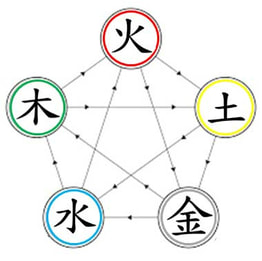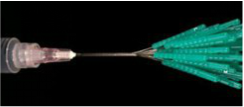Acupuncture for Health and Happiness
Acupuncture is one of the 'five pillars' of Traditional Chinese Medicine, in conjunction with Moxibustion, Tuina Massage, Herbal Medicine and Qi Gong practices. The remit of acupuncture is to restore smooth flow, using the channels where they emerge at the surface to influence internal processes.
Generally speaking, acupuncture is aimed at redressing imbalance: releasing tension, filling emptiness, draining fullness, envigorating where there is listlessness, settling where there is agitation - and achieving a calm brightness of spirit. Acupuncture theory, diagnosis and treatment are informed by a down-to-earth interpretation of the mechanisms of natural cycles, offering an opportunity to reassess our physiological and emotional patterns in the light of these mechanisms. Where are acupuncture points?The points are mapped all over the body, and we locate them by following the anatomical landmarks of the body. The most commonly used points are on the lower limbs and back.
What can acupuncture be used for?
In practice the scope of acupuncture is considerably wider than many people realise. Acupuncture is useful for a wide range of musculo-skeletal and systemic physiological conditions, It is also extremely useful in the treatment of emotional difficulties, such as grief, or anxiety, depression or rage. Mood is not considered in isolation, and often the same patterns can be seen at the physical and psycho-emotional levels, for example patterns of stagnation. obstruction, or of heat.
Generally speaking, whatever your reason for coming to acupuncture, you will very quickly see improvement in other key areas such as sleep, digestive and bowel function, energy levels, anxiety and how good you feel. You can use acupuncture as a means to:
To talk about specific conditions in more detail, please do get in touch. How does it work?
The theories of Chinese Medicine view a person as part of nature, so working the way nature works, with emotional climates and seasons, anatomical rivers and valleys, and prone to factors such as wind, damp and heat.
Most would agree that the insertion of these very fine needles with a light, skillful touch, will trigger the release of natural endorphins, bringing pain relief and mild euphoria. It would appear to function at the level of the body's own electrical and hormonal messaging systems, using the body like an elaborate and particularly beautiful circuit board to tap into internal processes that are constantly on the move as we work, rest and play. Energy is understood to move along 'meridian' pathways, following the anatomical structures of the body. More recently, an interpretation of the network of fascia throughout the body seems to shed some light on the anatomy of the meridian network. For a general introduction to acupuncture and its uses, try this from the British Acupuncture Council. What are the side effects?
One of the strengths of this system of medicine is that there are no side effects of the kind we are accustomed to with modern pharmaceutical medicine. Whatever your reason for coming to acupuncture, the side effect of treatment does tend to be feeling much better in yourself. Immediately after treatment some people can feel highly energised, or tired, or light-headed. It is recommended that you drink plenty of water for the rest of the day.
Do I need to believe in it, for it to work?
No, you do not.
How many treatments will I need to have?Musculo-skeletal and some other types of conditions can be resolved very quickly, perhaps after one treatment. A follow-up session is generally recommended. Chronic conditions may be more involved. For anxiety and nausea the effects can be immediate, but several treatments will be required for a lasting result. Response to treatment can differ considerably from person to person. Generally speaking 4 sessions of acupuncture is a good rule of thumb. Many people find acupuncture useful as an ongoing treatment to maintain good health, with monthly or quarterly treatments.
Does it hurt?
Acupuncture needles are very fine and bendy, like mouse whiskers. Mainly I use 16 gauge, which means a thickness of 0.16mm, probably like an eyelash. They are inserted swiftly to achieve a range of Qi sensations such as tingling, a 'charge' or a 'tug', accompanied by a feeling of relaxation. To offer an idea of scale, in this picture you can see that 40 acupuncture needles fit into the end of one hypodermic needle end.
Photo used courtesy of Acupuncture-Treatment.com Is my personal information safe with you?
|

|

